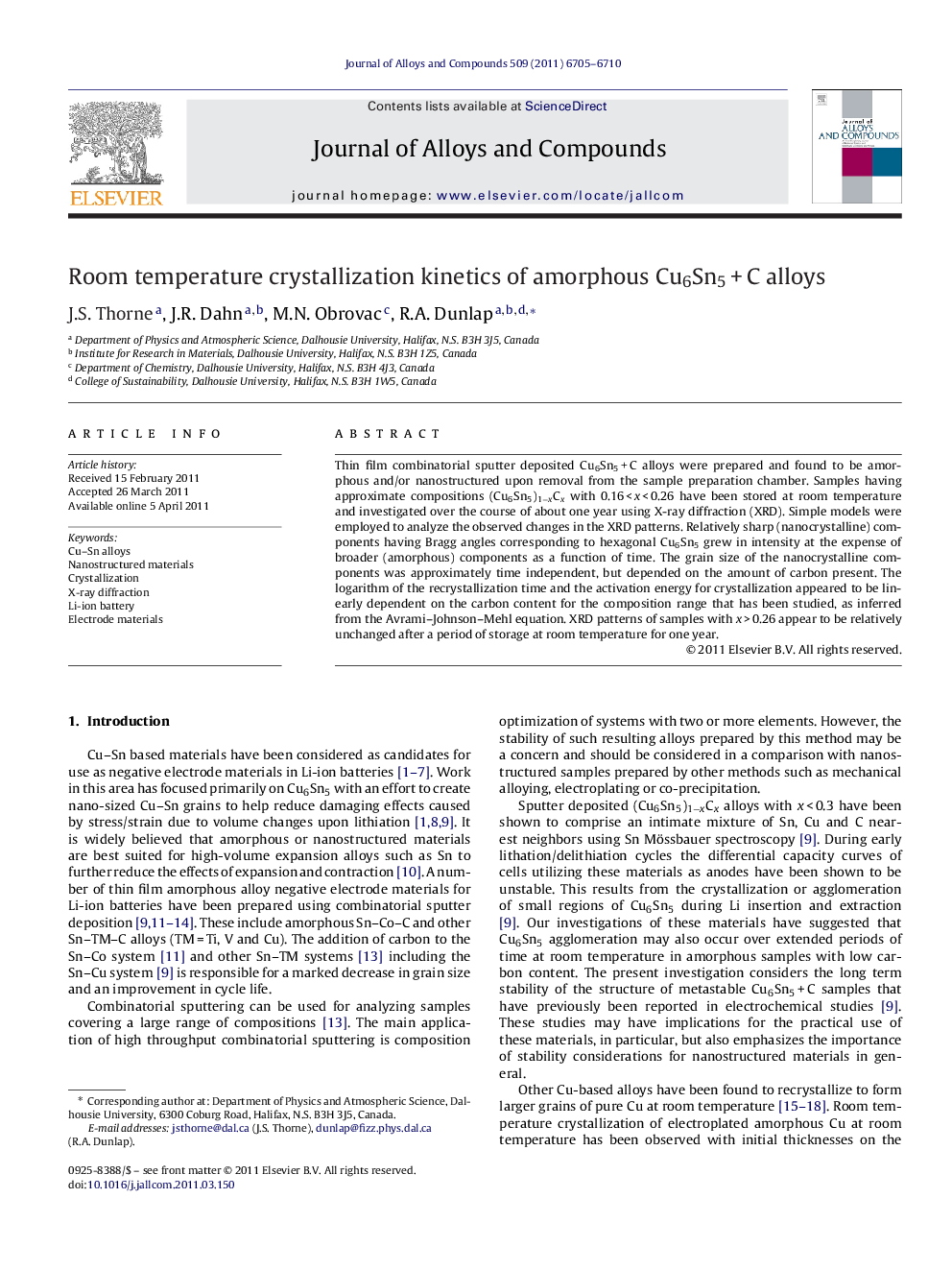| Article ID | Journal | Published Year | Pages | File Type |
|---|---|---|---|---|
| 1617838 | Journal of Alloys and Compounds | 2011 | 6 Pages |
Thin film combinatorial sputter deposited Cu6Sn5 + C alloys were prepared and found to be amorphous and/or nanostructured upon removal from the sample preparation chamber. Samples having approximate compositions (Cu6Sn5)1−xCx with 0.16 < x < 0.26 have been stored at room temperature and investigated over the course of about one year using X-ray diffraction (XRD). Simple models were employed to analyze the observed changes in the XRD patterns. Relatively sharp (nanocrystalline) components having Bragg angles corresponding to hexagonal Cu6Sn5 grew in intensity at the expense of broader (amorphous) components as a function of time. The grain size of the nanocrystalline components was approximately time independent, but depended on the amount of carbon present. The logarithm of the recrystallization time and the activation energy for crystallization appeared to be linearly dependent on the carbon content for the composition range that has been studied, as inferred from the Avrami–Johnson–Mehl equation. XRD patterns of samples with x > 0.26 appear to be relatively unchanged after a period of storage at room temperature for one year.
► Nanostructured Cu6Sn5 + C was found to crystallize at room temperature. ► Grain size distribution of Cu6Sn5 precipitates were found to be bimodal. ► Crystallite grain size was found to be a function of carbon content. ► Dynamics of crystallizations followed the Avrami–Johnson–Mehl relation.
